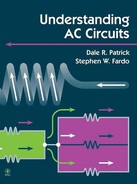Troubleshooting
Troubleshooting is a method of finding out why something doesn't work properly. If you follow logical steps, you will be able to locate most difficulties that occur in electronic equipment. Sometimes the trouble is so complex that it requires many hours of concentration and work. Other problems are easy to solve and require only a brief time.
Helpful resources for troubleshooting include the following:
1. Using a common sense approach
2. Knowing how electronic systems work
3. Knowing how to use test equipment
4. Knowing how to use schematics effectively
5. Being able to find the trouble through a logical sequence
To begin any kind of troubleshooting, determine possible courses of action. Without a system, the procedure of troubleshooting becomes a guessing game. You should be aware that no one system of troubleshooting is perfect. In the process of troubleshooting, keep in mind that most problems are usually component failures. If you know what each component is supposed to do, you will be aware of the troubles they can cause.
During troubleshooting, it is important that you use proper tests. Much of your time is used in locating the trouble. You must have a suitable approach to save time. As you become more familiar with troubleshooting, it becomes less time consuming.
As you continue your troubleshooting effort, you must constantly be aware of circuit or system operations you have already tested. Make a list or remember the probable troubles that have been tested.
Troubleshooting is a method of finding out why something does not work properly. If you follow logical steps, you will be able to locate most difficulties that occur in electronic equipment. Sometimes the trouble is so complex that it requires many hours of concentration and work. Other problems are easy to solve and require only a brief time. An important aspect of troubleshooting skill is initial inspection.
Initial inspection involves looking for the obvious. Several things should be done before actual circuit or system testing. In the initial inspection of any equipment, first open the equipment to look at it. You should look for the following:
1. Burned resistors. They are often obvious, may be charred, blistered, or bulged, and have discolored color bands or even holes.
2. Broken parts. These may come in the form of cracks, wires pulled out of parts, or destroyed parts.
3. Broken wires and poor connections.
4. Smoke or heat damage. Parts may smoke when equipment is turned on; this identifies defective parts but not the cause of the defect.
5. Oil leaks and water leaks.
6. Loose, damaged, or worn parts. These are found with visual and tactile examination.
7. Noisy parts. Uncommon noises indicate defective parts.
When initial inspection is performed properly, many troubles can be located without having to go through unnecessary steps. Initial inspection involves the senses of sight, touch, smell, and hearing. It is important to organize your thoughts to solve the problem. If you suspect a part of being the source of the problem, take a closer look. If you suspect a specific part, turn the equipment off and smell it, touch it, examine it closely. For example, a transformer that is good does not have an odor, but a burned transformer does. Initial inspection can help to locate the trouble in any defective electronic equipment or circuit.
The final solution of the problem involves application of your knowledge of electronic circuit operation and understanding the proper use of test equipment. Remember that troubleshooting is a systematic procedure.
